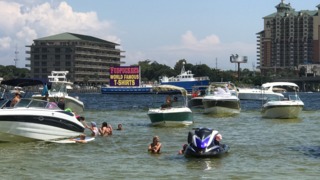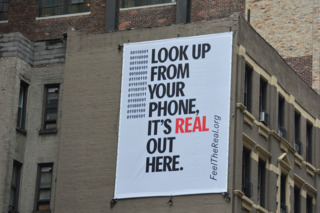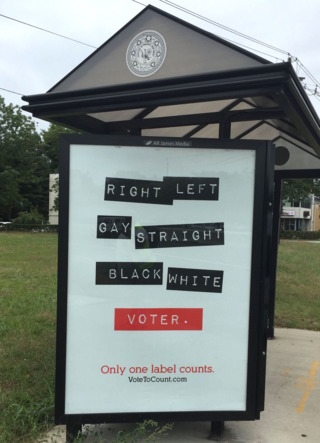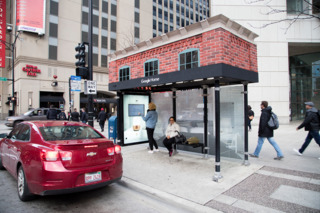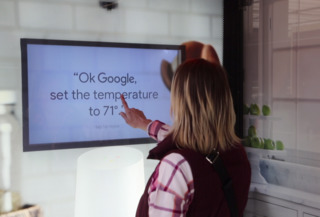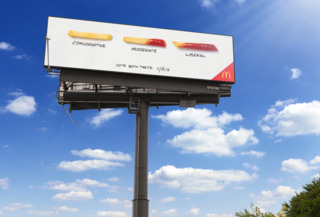Digital Powers Up Out of Home Advertising
Out of home advertising taps into technology to boost viability.

Out of home (OOH) advertising is having its day in the sun. OOH advertising revenue rose 3.1% in 2016 compared to the previous year, accounting for $7.6 billion, reports the Outdoor Advertising Association of America. This marks a record high for OOH with 27 consecutive quarters of growth since the recession in 2009.
“The real, powerful advertising capacity of OOH continues to drive growth with its ability to connect with consumers through a diverse mix of formats,” said Nicole Randall, communications director, Outdoor Advertising Association of America (OAAA).
Across the board, the news is all good for OOH. And it’s no wonder why—digital and OOH are a match made in heaven. The technology is both location and context specific, and able to deliver the right message, at the right time, to the right people.
“OOH offers advertisers a unique value proposition with bold creative delivered in contextually relevant environments,” affirmed Randall. “These factors, along with the expansion of digital platforms, are leading growth in OOH.”
In its latest forecast, Zenith predicts that digital OOH will grow faster globally than all other advertising, while PricewaterhouseCoopers projects that digital OOH advertising revenues will overtake traditional media spend in 2020, growing at a rate of 15% a year for the next four years.
Magna Global reports that OOH advertising was the only “traditional” media to experience growth in 2016.
Of course, the current crop of offerings by OOH agencies and manufacturers is anything but traditional, with platforms that include real-time screens, live-data feeds, featuring automated technology and the ability to be interactive.
“We’re starting to see more recognition technology in OOH campaigns,” Randall noted. “Cameras on billboards and other OOH formats can recognize a car’s make and model, thereby prompting ad changes to hyper-target audiences. Brands are also using behavioral data to reach consumers via OOH, based on location or personal preferences found in apps such as Instagram or Twitter. These innovative experiences perfectly compliment broader brand-building OOH campaigns – both printed and digital.”
For example, in 2016 Clear Channel Outdoor introduced RADAR, a targeting program developed to give marketers the ability to use the same kinds of sophisticated audience segmentation, targeting, and insights used in their digital campaigns. The thought is to allow OOH to be integrated into the broader marketing data ecosystem, giving brands the ability to map real-world behaviors, consumer habits, and travel patterns against specific Clear Channel Outdoor media.
One customer, TOMS Shoes, tapped RADAR to measure the impact of its OOH campaigns. Using geo-fenced billboards and mobile location data, RADAR provided TOMS with measurement analytics such as awareness, consumption, ad recall, and brand engagement. Targeting the 18 to 34 year old demographic, TOMS saw that those RADAR-partner placed provided aggregated, anonymous data that indicated if consumers were talking about the brand with friends, looking it up online, or finding it in stores after exposure to TOMS’ OOH advertising.
The result: the demographic exposed to OOH showed a greater likelihood to engage with the brand including talking about it with friends (+122%), looking the brand up online (+43%), finding it in-store (+47%), and purchasing shoes or other products (+44%).
As the OOH industry experiences a tech transformation, the tech sector is more drawn to the medium, said Randall. About 25% of the top 100 spenders in OOH are tech brands like Apple, Facebook, and Snapchat. These large tech companies have recently been featured on billboards, in airports, wrapped around city buses, and on large prominent walls in major cities across the world.
OOH communications agency Posterscope USA, partnered with Quividi, EYE Corp Media, and Engage M1 to design and implement a campaign at Santa Monica Place Mall for the GMC Acadia. Eight digital screens were fitted with video sensors and Quividi’s audience and context aware platform, to anonymously detect gender, facial expression, age, and composition of the passing audience, dynamically delivering humorous, branded content targeted to that specific audience.
Earlier this year, the agency launched Dynamic Scheduling, powered by Liverposter, which uses Artificial Intelligence to allow the programmatic ad serving across all digital out-of-home campaigns to dynamically compare millions of locations, and their hourly audiences, to identify how to best schedule content.
Also making is a splash is Splashboard Media, headquartered in Miramar Beach, on Florida’s Emerald Coast. This past summer, the newly formed company launched a floating billboard, which cruised a 100-mile distance along the Gulf of Mexico from Pensacola to Panama City Beach.
Splashboard’s flagship vessel is a 100-foot anchor handling ship featuring two back-to-back, 20x30-foot digital billboards from Watchfire, explains Carol Wade, Watchfire marketing director.
The billboards, which were read by beach-goers from a distance of 750 feet off-shore, featured still images, video, and streaming content, and garnered 363,000 daily impressions. They also integrated with social media.
“It’s an interesting use of our product,” noted Wade. “We have talked about our product’s reliability, and how are products are imperious to weather, salt, wind, and cold. This definitely makes the case.”
While the technology is virtually the same as would be used on a digital billboard in any location, Watchfire did work with Splashboard’s engineering team to determine the best way to safely mount the billboards.
“OAAA has had great success in promoting the value of OOH with its past industry campaigns, using the OOH medium to promote the OOH medium—targeting advertisers and agencies while grabbing consumer attention,” explained Randall. The next industry campaign, which will appear on multiple OOH formats across the country, is set to launch in 2018 and is poised to stir up the ad community.
“Stay tuned!” Randall exclaimed.

